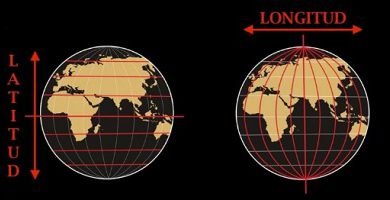What is population growth?
We explain what population growth is and the types of population growth. What are its causes and consequences.
-
What is population growth?
Population growth or population growth is called the change in the number of inhabitants of a given geographical region over time. This term is often used to speak of humans, but it can also be used in the study of animal populations (by ecology and biology ). Population growth is, then, the increase (or decrease, if negative) in the total number of individuals over an established period of time.
The study of populations and their dynamics of population change allows us to offer reasons and theories regarding the growth or decrease of populations, as well as to foresee their consequences in the short, medium and long term. That is why it is the object of study of statistics and other specialized disciplines , as well as an important source of data to design social, economic, ecological policies, etc.
The world’s human population is a perfect example of sustained population growth, especially during the last century. Of being 2,600 million in 1950 (when the UN was still young), in 1987 the number of humans on the planet reached 5,000 million, in 1999 6,000 million and in 2015 7,300 million. It is expected that by 2030 this global figure will reach 8,500 million and in 2100 the 11,200 million, if current conditions were maintained.
-
Types of population growth
In principle there are two types of population growth, one positive and one negative . There is talk of positive growth when the population of the analyzed region has increased during the period observed, that is, there are more settlers. And, logically, growth will be negative when the population has lost settlers, that is, it has shrunk.
-
Causes of population growth

The causes of population growth can be diverse, such as:
- Fertility and health conditions. When a population reaches optimal health conditions, which allows it to live beyond the reproductive age and expand families , birth rates generally increase, the population is fertile and reproduces heavily. In contrast, when conditions are hostile, individuals prefer not to reproduce or do little, or simply do not meet the minimum conditions to overcome reproductive age. Another important element is the infant death rate, which should be low to allow new individuals to grow, train and eventually reproduce as well.
- Increase in longevity. If people live longer, they can reproduce more and also live to see their descendants reach adulthood, thus generating an elderly population.
- Migrations The arrivals and departures of individuals who decide to make their lives in other places (emigrants) or who come from other regions to the one studied (immigrants), not only contributes to cultural and genetic enrichment, but can also add new settlers or subtract individuals who They left.
- Changes in the quality of life in general. A thriving economy , a stable policy , a high demand for workers or a large market for the consumption of services are usually factors that generate immigration and positive population growth, since the inhabitants have a standard of living that guarantees them a future.
-
Consequences of population growth

The increase in population can bring many advantages, but also problems and unexpected consequences, such as:
- Increase in the demand for goods and services. Those populations that experience sustained positive growth over time begin to require more and more inputs to sustain the level of demand, which allows jobs to be filled, the economy to be mobilized, but also that there is greater competitiveness and that they are fueled certain feelings of nonconformity (such as xenophobia ).
- Exchange and cultural and genetic enrichment. Miscegenation is a huge source of diversity and wealth. For this reason, populations that remain too long isolated are culturally and genetically stagnant since they do not have a source of novel ideas or different genetic information (thus reducing the proportion of defects and mutations).
- Deterioration of the standard of living. When the receiving society cannot offer the minimally necessary to migrants or new generations, an uncontrolled increase in population can increase pollution , population density (causing overcrowding and shortage of certain goods and services , which logically makes them more expensive ), or poverty.
-
Population growth rate
The population growth rate ( PGR ) is the index that indicates the growth or decrease in the number of individuals in a given geography during a specific period. Using official figures obtained from the local bureaucracy and registry apparatus, it can be determined by applying the following formula:
Growth rate = (final population – initial population) / initial population
A positive growth rate indicates an increase in the number of inhabitants , while a negative indicates a contraction in the population. In any case, the population variation can be expressed according to the growth rate, that is, the percentage of variation:
Growth ratio = Growth rate x 100%
In those cases where the growth rate is zero (0), we will be in the presence of a population in equilibrium: neither in population increase, nor in decrease. This means that birth and mortality are equated.
-
Countries with higher population density

The population density indicates how much a specific territory is populated , assuming an average distribution of the population along its surface. The regions with the highest density are those with the least area per inhabitant, while the least populated will allocate a lot of surface to each.
The most densely populated countries should not be confused with those of greater population ; the former may have high densities due to their limited geographical dimensions, which allows them to have a relatively small population.
According to 2017 data, the seven most densely populated countries in the world are:
- Monaco. In Europe, with a density of approximately 19,307 inhabitants / km2.
- Singapore. In Asia, with a density of approximately 8,017 inhabitants / km2.
- Bahrain In the Middle East, with a density of approximately 2,617 inhabitants / km2.
- Vatican City. In Europe, with a density of approximately 1,818 inhabitants / km2.
- Malt. In Europe, with a density of approximately 1,387 inhabitants / km2.
- Maldives. In Asia, with a density of 1,188 inhabitants / km2 approximately.
- Bangladesh In Asia, with a density of approximately 1,145 inhabitants / km2.





